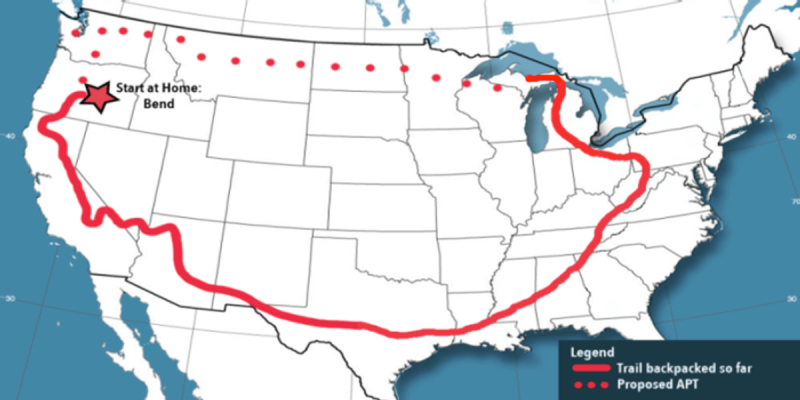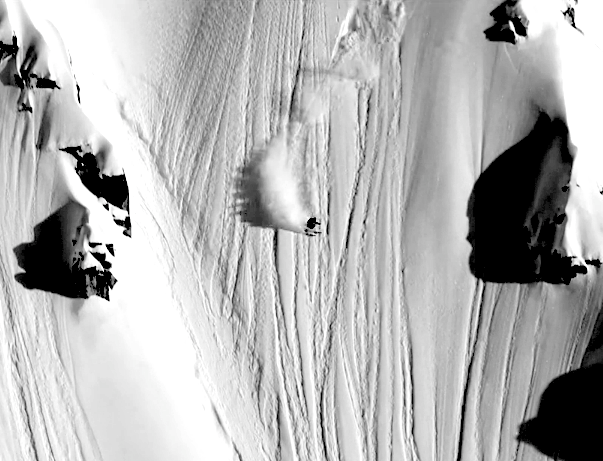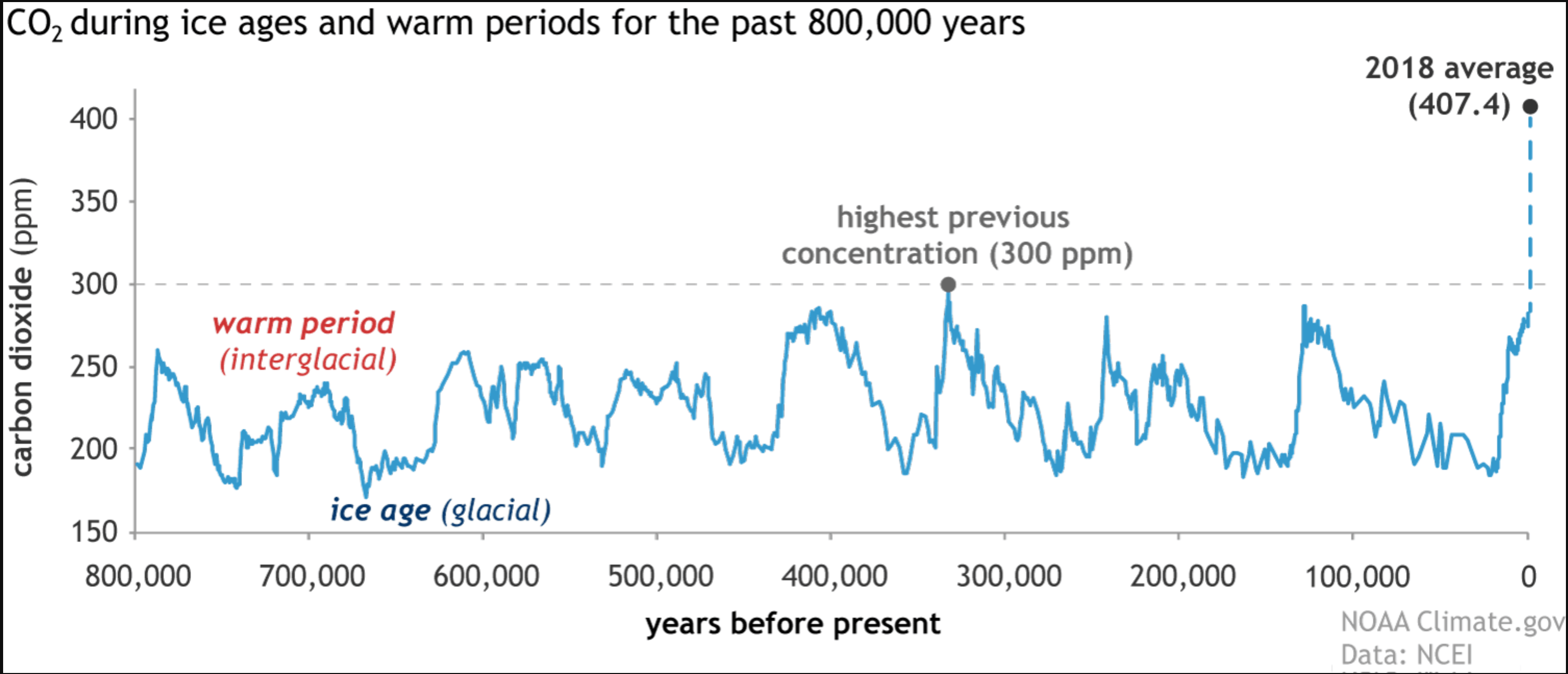While California’s drought pushes into its fourth year, we ain’t seen nothing yet. The severe drought in the U.S. Southwest pales in comparison to what’s coming: a “megadrought” that will grip that region later this century and could last for decades, says NASA:
NASA Study Finds Carbon Emissions Could Dramatically Increase Risk of U.S. Megadroughts
February 12, 2015
Droughts in the U.S. Southwest and Central Plains during the last half of this century could be drier and longer than drought conditions seen in those regions in the last 1,000 years, according to a new NASA study.
The study, published Thursday in the journal Science Advances, is based on projections from several climate models, including one sponsored by NASA. The research found continued increases in human-produced greenhouse gas emissions drives up the risk of severe droughts in these regions.
“Natural droughts like the 1930s Dust Bowl and the current drought in the Southwest have historically lasted maybe a decade or a little less,” said Ben Cook, climate scientist at NASA’s Goddard Institute for Space Studies and the Lamont-Doherty Earth Observatory at Columbia University in New York City, and lead author of the study. “What these results are saying is we’re going to get a drought similar to those events, but it is probably going to last at least 30 to 35 years.”

According to Cook, the current likelihood of a megadrought, a drought lasting more than three decades, is 12 percent. If greenhouse gas emissions stop increasing in the mid-21st century, Cook and his colleagues project the likelihood of megadrought to reach more than 60 percent.
However, if greenhouse gas emissions continue to increase along current trajectories throughout the 21st century, there is an 80 percent likelihood of a decades-long megadrought in the Southwest and Central Plains between the years 2050 and 2099.
The scientists analyzed a drought severity index and two soil moisture data sets from 17 climate models that were run for both emissions scenarios. The high emissions scenario projects the equivalent of an atmospheric carbon dioxide concentration of 1,370 parts per million (ppm) by 2100, while the moderate emissions scenario projects the equivalent of 650 ppm by 2100. Currently, the atmosphere contains 400 ppm of CO2.
In the Southwest, climate change would likely cause reduced rainfall and increased temperatures that will evaporate more water from the soil. In the Central Plains, drying would largely be caused by the same temperature-driven increase in evaporation.
The Fifth Assessment Report, issued by the United Nations Intergovernmental Panel on Climate Change (IPCC) in 2013, synthesized the available scientific studies and reported that increases in evaporation over arid lands are likely throughout the 21st century. But the IPCC report had low confidence in projected changes to soil moisture, one of the main indicators of drought.
Until this study, much of the previous research included analysis of only one drought indicator and results from fewer climate models, Cook said, making this a more robust drought projection than any previously published.
“What I think really stands out in the paper is the consistency between different metrics of soil moisture and the findings across all the different climate models,” said Kevin Anchukaitis, a climate scientist at the Woods Hole Oceanographic Institution in Woods Hole, Massachusetts, who was not involved in the study.
“It is rare to see all signs pointing so unwaveringly toward the same result, in this case a highly elevated risk of future megadroughts in the United States.”

This study also is the first to compare future drought projections directly to drought records from the last 1,000 years.
“We can’t really understand the full variability and the full dynamics of drought over western North America by focusing only on the last century or so,” Cook said. “We have to go to the paleoclimate record, looking at these much longer timescales, when much more extreme and extensive drought events happened, to really come up with an appreciation for the full potential drought dynamics in the system.”
Modern measurements of drought indicators go back about 150 years. Cook and his colleagues used a well-established tree-ring database to study older droughts. Centuries-old trees allow a look back into the distant past. Tree species like oak and bristle cone pines grow more in wet years, leaving wider rings, and vice versa for drought years. By comparing the modern drought measurements to tree rings in the 20th century for a baseline, the tree rings can be used to establish moisture conditions over the past 1,000 years.
The scientists were interested in megadroughts that took place between 1100 and 1300 in North America. These medieval-period droughts, on a year-to-year basis, were no worse than droughts seen in the recent past. But they lasted, in some cases, 30 to 50 years.

When these past megadroughts are compared side-by-side with computer model projections of the 21st century, both the moderate and business-as-usual emissions scenarios are drier, and the risk of droughts lasting 30 years or longer increases significantly.
Connecting the past, present and future in this way shows that 21st century droughts in the region are likely to be even worse than those seen in medieval times, according to Anchukaitis.
“Those droughts had profound ramifications for societies living in North America at the time. These findings require us to think about how we would adapt if even more severe droughts lasting over a decade were to occur in our future,” Anchukaitis said.
NASA monitors Earth’s vital signs from land, air and space with a fleet of satellites and ambitious airborne and ground-based observation campaigns. NASA develops new ways to observe and study Earth’s interconnected natural systems with long-term data records and computer analysis tools to better see how our planet is changing. The agency shares this unique knowledge with the global community and works with institutions in the United States and around the world that contribute to understanding and protecting our home planet.






Ironically building more damns (ie human activity that emits large quantities of C02) may help solve the water problem (at least in a small time scale), but will will add to total C02 emissions and exacerbate this problem in the long run. The big change needed is the cost of water usage and CO2 emission have to go up. Efficiency is great but the thing about efficiency is it tends to drive down the cost of doing things, so we inevitably end doing more of those things. (When the cost of gas goes down, we drive more). Everyone especially skiers hate to hear the cost of things like this should be increased, but its probably the only real way to change our behavior.
Not sure if uber is aware of recently passed CA state legislation by majority dems including signed into law by Gov Brown (D), that in effect will create more efficient and increased water storage solutions for CA.
Wondering if BLUBER even voted this past Nov on that ballot measure., apparently not considering his naive comments.
I merely pointed out that there has been climate variation before man-made carbon emissions.
I also suggested to positive courses of action to mitigate a potential mega-drought.
For that, I was called names by all 3 commenter’s. It is not enough just to disagree, those that question must be personally attacked.
No, I wasn’t aware of the (D) law; I’m not a CA resident. Good for them passing such a law, it will be interesting to see what the actual results are.
I am aware that money will be that could be used for Dams is being used for the “fast train”.
I also know there was talk of draining Hetch Hetchy.
And in CA it will be hard to get any new storage reservoirs approved with the Sierra Club, “Environmental” Lobby, and the Delta Smelt.
“For that, I was called names by all 3 commenter’s. It is not enough just to disagree, those that question must be personally attacked”.
Yep, that’s the tactic that indoctrination teaches. It’s only open for discussion if you agree.
UberRight is in denial
How else can science make.such a prediction unless there has been irreversibe harmful chnge to our geo sphere?
http://Www.geoengineeringwatch.org
Uber right you sir are obviously an idiot for drinking the kool-aid of denial.
Oh sorry my bad denial is a river in egypt that is controlled by isis and should be.destroyed. nooge
There was no fossil-fuel emissions during the medieval-period droughts. “Nature-Made” climate change.
So climate change isn’t entirely “Man-Made”.
Maybe it would be prudent for California to build some more reservoirs to capture what little rain will fall?
Maybe the Forest Service should allow more snowmaking reservoirs to be built? No skiing = reduced lease payments $$$.